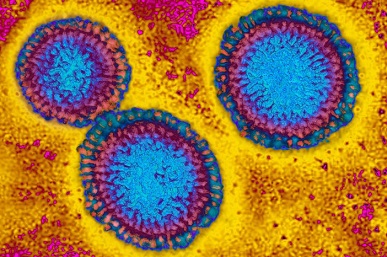Nikhil Prasad Fact checked by:Thailand Medical News Team Jun 17, 2024 1 year, 6 months, 2 weeks, 1 day, 6 hours, 45 minutes ago
Influenza News: Every year, influenza, commonly known as the flu, poses a significant health risk worldwide. This highly contagious respiratory disease causes between 3 to 5 million severe cases annually and results in approximately 290,000 to 650,000 deaths. Influenza viruses, particularly types A and B, are responsible for most of these cases. The virus evolves constantly, making it challenging for our immune system and vaccines to keep up. This continuous evolution allows the virus to evade immunity from previous infections or vaccinations, leading to recurrent outbreaks.
 Linc01615: Enhancing Immunity Against Influenza
The Role of Non-Coding RNAs
Linc01615: Enhancing Immunity Against Influenza
The Role of Non-Coding RNAs
Our understanding of the human genome has revealed that a significant portion consists of non-coding RNAs (ncRNAs). These RNA molecules do not code for proteins but play critical roles in various biological processes. Among these ncRNAs, long non-coding RNAs (lncRNAs) and long intergenic non-coding RNAs (LincRNAs) have garnered attention for their potential involvement in disease processes, including viral infections.
Linc01615: A New Player in Influenza Defense
Recent research by scientist from the Key Laboratory of Animal Microbiology of China’s Ministry of Agriculture, College of Veterinary Medicine, Nanjing Agricultural University-China that is covered in this
Influenza News report, has identified a specific LincRNA, known as Linc01615, which appears to play a crucial role in the body’s response to influenza virus infection. This discovery emerged from a study conducted by researchers at Nanjing Agricultural University, China. They found that Linc01615 levels increased in human lung cells (A549 cells) upon infection with the influenza virus PR8 strain. This increase was associated with the activation of the intracellular immune system.
How Linc01615 Works
The study revealed that knocking down Linc01615, meaning reducing its levels in cells, led to enhanced proliferation of the influenza virus. This suggests that Linc01615 helps the immune system fight off the virus. When Linc01615 levels were lowered, the expression of crucial immune molecules like interferons (IFN-β, IL-28A, IL-29) and other antiviral proteins (ISG-15, MX1, MX2) also decreased. These molecules are vital for an effective immune response against viral infections.
The Interaction with DHX9
Further investigation into Linc01615's mechanism revealed a potential interaction with a protein called DHX9. DHX9 is a multifunctional RNA helicase involved in various cellular processes, including transcription (the process of making RNA from DNA) and immune responses. The researchers used advanced techniques to show that DHX9 interacts with Linc01615. When DHX9 was knocked down, Linc01615 levels also dropped after influenza virus infection. This interaction indicates that DHX9 might help regulate the expression of Linc01615, thereby influencing the immune response.
Implications for Influenza Treatment
Understanding the role of Linc01615 in the immune response to influenza provides valuable insights into potential new treatments. By targeting Linc01615 or its interaction with DHX9, it might be possible to develop new therapeutic strategies to enhance the body's ability to fight influenza infections. This could be particularly important given the challenges in creating effective vaccines due to the virus's constant evolution.
Future Directions
While the current study highlights the significance of Linc01615 in influenza virus infection, further research is needed to fully understand its function and mechanisms. Future studies could explore how Linc01615 interacts with other proteins and its role in different types of cells and viral infections. Additionally, investigating how Linc01615 expression is regulated could provide new avenues for therapeutic interventions.
Conclusion
The identification of Linc01615 as a crucial player in the immune response to influenza virus infection opens up exciting possibilities for new treatments. By enhancing our understanding of how LincRNAs like Linc01615 function, we can develop innovative strategies to combat viral infections more effectively. This research not only sheds light on the complexities of the immune response but also offers hope for better management and prevention of influenza in the future.
The study findings were published in the peer reviewed International Journal of Molecular Sciences.
https://www.mdpi.com/1422-0067/25/12/6584
For the latest
Influenza News, keep on logging to Thailand Medical News.
Read Also:
https://www.thailandmedical.news/news/pyrogallol-protects-against-influenza-a-virus-induced-lethal-lung-injury-via-nrf2-ppar-gamma-ho-1-signaling-axis-activation
https://www.thailandmedical.news/news/french-study-finds-that-human-host-protein-tdp-43-plays-a-role-in-influenza-a-virus-replication
